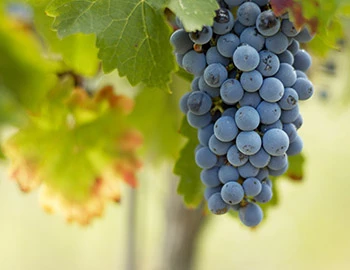
Château La Lagune 2015
AC Haut-Médoc 3ème Cru classé, 750 ml

| Grape variety: | Cabernet Sauvignon, Merlot, Cabernet Franc, Petit Verdot |
| Producer: | Château La Lagune |
| Origin: | France / Bordeaux / Haut-Médoc |
Description
Robert Parker, The Wine Advocate (Lisa Perrotti-Brown) writes about this vintage 2015: "The medium to deep garnet-purple colored 2015 la Lagune is scented of cassis, crushed red currants and dried herbs with a waft of underbrush. The medium-bodied mouth is chewy and refreshing with a good vibrant fruit core and lively finish."
Attributes
| Origin: | France / Bordeaux / Haut-Médoc |
| Grape variety: | Cabernet Sauvignon, Merlot, Cabernet Franc, Petit Verdot |
| Ripening potential: | 5 to 15 years |
| Drinking temperature: | 16 to 18 °C |
| Food Pairing: | Châteaubriand, Filet Wellington, Rabbit ragout with olives, Roast veal with morel sauce |
| Volume: | 14.0 % |
| Note: | Contains sulphites |
Petit Verdot
Bordeaux’s secret weapon
It is commonly said that the Petit Verdot originated in Bordeaux. But genetically, it is closer to a group of vines from near the Pyrenees, which are most likely descended from wild clematis. In French, these wild plants are called “lambrusques”, and the Petit Verdot is also known under the synonym Lumbrusquet. It is a high quality grape: very dark and spicy with notes of cassis and graphite, plenty of robust tannins and strong acidity. Most major Bordeaux contain a small proportion of Petit Verdot. Appropriately, it is valued wherever wines are produced according to the Bordeaux recipe. For example, in Italian Maremma or in California, where it covers the largest area worldwide. It is almost never vinified purely by itself. Incidentally, its name, derived from “vert”, meaning green, alludes to its Achilles heel: in cool weather it tends to form small, seedless green grapes.

Merlot
Everybody’s darling
Merlot is the most charming member of the Bordeaux family. It shines with rich colour, fragrant fullness, velvety tannins and sweet, plummy fruit. It even makes itself easy for the vintner, as it matures without issue in cool years as well. This is in contrast to the stricter Cabernet Sauvignon, which it complements as a blending partner. Its good qualities have made the Merlot famous worldwide. At over 100,000 hectares, it is the most-planted grape in France. It also covers large areas in California, Italy, Australia and recently in Eastern Europe. The only catch is that pure Merlot varieties rarely turn out well. Its charm is often associated with a lack of substance. Only the best specimens improve with maturity. They then develop complex notes of leather and truffles. This succeeds in the top wines from the Bordeaux appellation of Pomerol and those from Ticino, among others.

Haut-Médoc
Haut-Médoc: pure Bordeaux feeling
The Médoc is a large, almost flat area, lying only a few metres above sea level. In the northern part, which lies near the Gironde estuary and was once called Bas-Médoc, simpler wines tend to result from heavy soils. The Haut-Médoc, on the other hand, comprises the more southern part, reaching up to the suburbs of the city of Bordeaux. Close to the premier crus, assemblages dominated by Cabernet Sauvignon are produced here that promise that pure Bordeaux feeling.

Bordeaux
Bordeaux: high prestige, high quality
With a total area of around 115,000 hectares, Bordeaux may not be France’s largest wine-growing region, but it is certainly its most prestigious. The range of wines produced here today is enormous: ranging from red everyday wines with a great relationship between price and quality to exclusive, and accordingly expensive, premier crus. Elegant white wines and noble sweet specialties round out the spectrum.

France
France – Philosophy in a bottle
According to French philosophy, wine should be an expression of the soil and climate. They use the word “terroir” to describe this. Terroir makes every wine different, and many especially good. French wine is regarded worldwide as an expression of cultural perfection. The French believe that humans are responsible for the quality of the berries, the vine variety for their character, and nature for the quantity. This philosophy can be expressed succinctly as: “the truth is the vineyard, not the man.”


